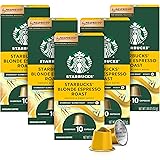Mastering Coffee Brewing: Your Guide to a Proper Cup of Coffee
Are you tired of lackluster coffee and unsure how to elevate your daily brew at home? Many coffee enthusiasts begin their journey feeling overwhelmed by the vast array of equipment and techniques. Thankfully, creating a truly delicious cup of coffee does not need to be complicated. This comprehensive guide, which complements the video above, will break down the essential steps for beginners, ensuring you understand the fundamentals of coffee brewing for beginners and are well on your way to enjoying a consistently perfect cup.
The secret to exceptional coffee is often found in mastering just a few core principles. By focusing on three key elements—the quality of your coffee beans, the precision of your grind, and the selection of your brewing method—a remarkable difference can be achieved. We will explore each of these factors in detail, providing you with practical advice and actionable tips for your home brewing journey.
The Foundation: Understanding Your Coffee Beans
The journey to a proper cup of coffee always begins with the beans themselves. High-quality, fresh coffee beans are widely considered the single most influential factor in your brew’s final taste profile. If your prior experience has been limited to instant coffee, a whole new world of flavor is awaiting your discovery.
Freshness Matters: The Life Cycle of Coffee Beans
Freshness is paramount when it comes to coffee beans. Ideally, coffee beans are enjoyed within a specific window after they have been roasted. It is recommended that beans be purchased from craft roasters who prioritize roasting just before shipping orders.
Once received, these beans should optimally be consumed within 14 days to preserve their peak flavor and aroma. Beyond this two-week period, the delicate compounds responsible for coffee’s complex taste begin to dissipate, potentially resulting in a less vibrant and more muted beverage. Proper storage in an airtight container, away from light and heat, further helps maintain their integrity.
Decoding Coffee Roasts: Light, Medium, and Dark
The roast level significantly influences the flavor profile of your coffee. Different roasts unlock distinct characteristics, catering to various taste preferences. Understanding these differences allows for a more informed selection that aligns with your desired coffee experience.
-
Light Roasts: These beans are typically roasted for a shorter duration and at lower temperatures. They retain much of their original origin characteristics, often exhibiting bright, fruity, and floral notes. The acidity is usually higher, and the “roasty” flavor is minimal, allowing for a very nuanced and complex cup.
-
Medium Roasts: Representing a balanced profile, medium roasts are often celebrated for their well-rounded nature. They offer a harmonious blend of the coffee’s original flavors and the sweet, caramel notes developed during roasting. This roast level provides a good “kick” with a pleasant body and often appeals to a broad range of palates.
-
Dark Roasts: Roasted to a deeper color, dark roasts feature more intense and bold flavors. The original characteristics of the bean are usually overshadowed by notes of chocolate, caramel, and sometimes smokiness. The body of a dark roast is typically heavier, and the acidity is lower, creating a powerful and robust cup.
Experimenting with various roast levels is encouraged to discover what truly resonates with your taste buds. As you become more attuned to subtle flavor notes, your appreciation for coffee’s diversity will surely grow.
The Grind: Unlocking Coffee’s Potential
Once you have selected your freshly roasted beans, the next crucial step in preparing a proper cup of coffee is grinding them. The timing and consistency of your grind play an enormous role in flavor extraction. Grinding coffee beans immediately before brewing is absolutely essential for maximizing freshness and achieving the best possible taste.
Why Grind Freshly? The Science of Staling
When coffee beans are ground, their surface area dramatically increases, exposing more of the delicate flavor compounds to oxygen. This exposure causes many volatile aromatic compounds and carbon dioxide, which developed during roasting, to rapidly escape. Consequently, pre-ground coffee quickly loses its vibrancy and can result in a stale, often bitter, and unappealing drink. To prevent this, grinding right before you brew ensures that these flavorful elements are preserved until they are extracted into your cup.
Choosing Your Grinder: Manual vs. Electric Burr
An appropriate grinder is a vital investment for anyone serious about brewing better coffee. While blade grinders are widely available, they chop beans unevenly, leading to inconsistent extraction and unpredictable flavors. Burr grinders, by contrast, crush beans between abrasive surfaces, providing a uniform particle size.
-
Manual Grinders: These are excellent for those on a budget or for small batches. They are portable, relatively inexpensive, and provide a consistent grind quality. While they require manual effort, they are a fantastic entry point into home grinding.
-
Electric Burr Grinders: For convenience and consistency, an electric burr grinder is highly recommended. These machines offer precise control over grind size and are ideal for daily use. Investing in a good burr grinder will significantly enhance your coffee brewing capabilities.
Grind Size Matters: Matching Grind to Brew Method
The consistency of your coffee grounds directly impacts how water interacts with them during brewing. Different brewing methods necessitate specific grind sizes to achieve optimal extraction. Incorrect grind size can lead to either underextraction (weak, sour coffee) or overextraction (bitter, harsh coffee).
-
Fine Grind: Similar to table salt or powdered sugar, fine grounds offer a large surface area for quick extraction. This is typically required for pressure-based methods like espresso machines, where water contact time is very short.
-
Medium Grind: Resembling regular sand, medium grounds are versatile and suitable for methods where water has moderate contact time. Pour-over brewers and some drip coffee makers often utilize a medium grind.
-
Coarse Grind: With a consistency similar to sea salt or breadcrumbs, coarse grounds are used for brewing methods involving longer immersion times. The larger particles prevent over-extraction and sludge in methods like the French press or cold brew.
Understanding and correctly adjusting your grind size is a fundamental skill in achieving consistently delicious coffee.
Brewing Methods: The Art of Extraction
The final step in creating a proper cup of coffee involves selecting and executing your brewing method. All coffee brewing techniques are essentially variations of three fundamental approaches: pressure, gravity, and immersion. Each method interacts with coffee grounds in a unique way, resulting in distinct flavor profiles and textures.
Pressure Brews: Intense and Powerful
Pressure brewing forces hot water through finely ground coffee under high pressure, extracting a concentrated shot of coffee. The most well-known example is the espresso machine. This method produces a very intense and powerful beverage with a rich crema, which is the reddish-brown foam on top. Fine grounds are essential for this method, as they provide adequate resistance to the high-pressure water. An AeroPress can also mimic espresso to a certain extent, offering a portable and versatile option for concentrated coffee.
Gravity Brews: Clean and Bright
Gravity brewing, exemplified by pour-over and drip coffee makers, relies on gravity to draw hot water through a bed of coffee grounds and a paper filter. This method often results in a clean, bright, and nuanced cup, as the paper filter typically traps most of the fine sediment and oils. Fine to medium grounds are commonly used for gravity brewing, allowing for efficient extraction without clogging the filter. The resulting coffee often highlights the delicate aromatic compounds of the beans.
Immersion Brews: Bold and Full-Bodied
Immersion brewing involves steeping coffee grounds directly in hot (or cold) water for an extended period, allowing all the soluble compounds to dissolve. French press and cold brew are prime examples of this method. Immersion brews are known for their bold, full-bodied, and often rich flavor profiles, as they retain more of the coffee’s natural oils and fine sediments. Coarse grounds are critical for immersion methods to prevent over-extraction and to ensure easy separation of grounds from the liquid. The French press is particularly beginner-friendly, offering a flavorful and robust coffee experience.
For beginners, the AeroPress or French press are excellent and inexpensive starting points. The AeroPress can create specialty coffees like cappuccinos and lattes when mixed with foamed milk. Additionally, a French press can be used to froth milk, removing the immediate need for an espresso machine and offering significant versatility.
Brewing Your First Proper Cup: French Press Method
To put these principles into practice, let us walk through making your first proper cup of coffee using the French press method. This approach is widely accessible and provides a richly flavorful result. Precision in measurement and timing will significantly contribute to a consistently excellent brew.
Step-by-Step French Press Recipe
For this example, we will aim for a ratio of 1 part coffee to 15 parts water, a popular starting point for French press brewing.
-
Measure Your Coffee: Place your French press on a kitchen scale and tare it to zero. Carefully add approximately 15 grams of coarse-ground coffee beans into the vessel. If a scale is unavailable, measuring by volume with a scoop can be done, but a scale offers superior accuracy.
-
Heat Your Water: Heat about 240 grams (or milliliters, as water density is close to 1 g/mL) of water to approximately 200-205°F (93-96°C). This temperature range is ideal for optimal extraction without scalding the coffee.
-
The Bloom: Slowly pour a small amount of hot water (around 30-45 grams) over the grounds, ensuring they are evenly saturated. Allow the coffee to “bloom” for 30 seconds. This step releases trapped carbon dioxide, leading to a more even extraction and better flavor.
-
Add Remaining Water: After the bloom, slowly pour the remaining hot water, reaching a total of 240 grams (including the bloom water). Ensure all grounds are fully submerged. A gentle stir may be performed to ensure even saturation.
-
Steep: Place the lid gently on the French press, but do not plunge yet. Allow the coffee to steep for four minutes. This immersion time is crucial for developing the coffee’s body and flavor.
-
Plunge: After four minutes, slowly and steadily push the plunger down. This action separates the coarse coffee grounds from the brewed coffee. Avoid plunging too quickly, as this can disturb the sediment and lead to a cloudy cup.
-
Serve Immediately: Once plunged, pour the freshly brewed coffee into your mug. It is recommended to serve all the coffee immediately or transfer it to another vessel to prevent over-extraction, which can occur if the coffee remains in contact with the grounds.
By following these steps, a remarkably flavorful and satisfying cup of coffee can be achieved. Remember, the journey to mastering coffee brewing is an enjoyable one, filled with continuous learning and discovery.







